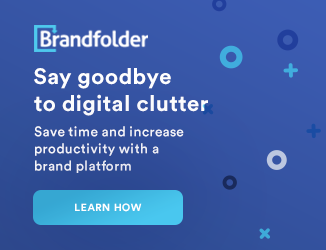What is Digital Asset Management?
Digital Asset Management (DAM) is evolving rapidly and represents both major opportunities and potential pitfalls for many industries. Simply stated, DAM (sometimes referred to as "Media Asset Management" or "Content Management") is the systematic cataloguing and management of digital rich media: text, imagery, video and audio, so that they can be reused and/or re-purposed at a later time. If you have spent time and money creating or acquiring something then that item is an asset of your organisation.
What are the benefits of DAM?
DAM improves your ability to archive, search for and retrieve your assets.
DAM improves the collaboration & communication between work groups.
DAM facilitates the quick and easy distribution of your assets to internal and external teams.
DAM prevents the misuse of copyrighted material.
DAM prevents the use of incorrect assets.
DAM can help maintain consistent branding.
DAM makes better use of existing digital content.
DAM can help to reduce production and other organisational costs.
Sitecore Digital Asset Management enables businesses to store, manage and process digital media files across the company and across the world for usage in print and electronic media.
The DAM Concept.
Digital Asset Management is not a new concept. It is actually a billion dollar industry that enables corporate enterprises worldwide to collaborate and avoid wasted time and resources. In fact you've probably been managing your own assets such as digital photographs, movies, mp3 files and emailed documents for years. Its pretty simple stuff for a home user but when a company's assets begin to number in the thousands, reside on servers all over the corporations network, come from a variety of different sources (such as photo libraries and wire feeds) and need to be accessed by employees all over the state, country or even the planet, then even the advanced 'Find' feature of your desktop OS is not enough.
An Efficient Workflow
The key to a successful DAM implementation lies in the creation of an efficient workflow. Not only should your solution allow the users to catalog and store their assets but it should also allow them to search for and retrieve these assets without creating bottlenecks in production. Most workflows follow a standard plan:
1.) Gather your files: A company new to DAM may find that their assets are scattered over hard drives, tape backups and external media.
2.) Catalog your files: This is the process of importing and storing your digital assets in a suitable location. Smaller firms will have their assets centralised on a single server whereas larger businesses may have their assets synced to servers across their global network.
3.) Apply metadata: Metadata is loosely defined as data about data. Some metadata is added to the asset automatically (digital photographs are often pre-tagged with information such as time, date, GPS location, file size, photographer, camera type etc). Additional metadata can be added by the user after the asset is catalogued. An assets metadata facilitates the ease of search and retrieval so it is essential that your DAM system capture as much metadata as you need.
4.) Manage your files: Just because you found an asset doesn't mean you have the right to use it. Managing your assets and their metadata correctly will prevent copyright infringement and the multiple use of the same image when other suitable candidates are available. Licensing details and usage history are just some of the examples of custom metadata you can include with your assets.
5.) Make your files available to others: How do you plan to share your files with multiple users? Most DAM systems will allow you to make collections available over the LAN or WAN, publish to CD/DVD or the web, or even email the assets to the end user. The key to making your assets available is to ensure that the master copy is always safely stored on your server and only copies are sent.
6.) Archive your files: Master files and their derivatives need to be backed up on a regular basis just like the rest of your company's intellectual property.
The DAM Champion
In any work group environment where there are multiple users of a DAM solution there is a propensity for assets to be hastily cataloged with the wrong metadata. From simple spelling errors to intentionally ingested illegal images there remains the possibility that a user can wreak havoc upon a corporate DAM and prevent easy access to the information in the future. It is for these reasons that we recommend a high level user, or group of users, take on the role of the DAM Champion. This will provide consistency of cataloguing and help to minimise metadata errors.
What now?
If you are new to Digital Asset Management and want to know what its all about, or you are a seasoned veteran wishing to be kept up to date with the latest technology, please contact us on 1300 1FOLKS (1300 136 557). Creative Folks have been providing cost effective DAM solutions since 1992 and we know how to avoid the potential pitfalls.



 Previous
Previous


